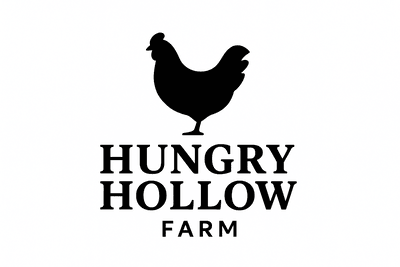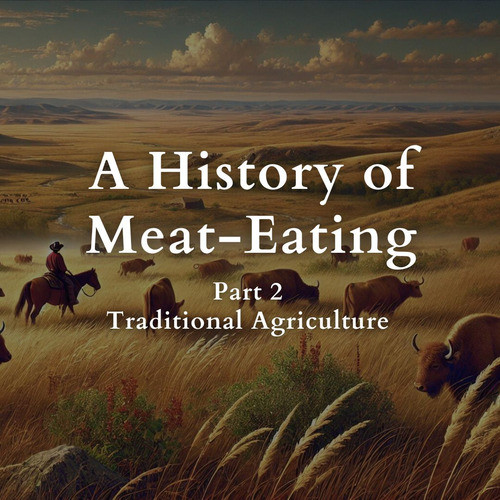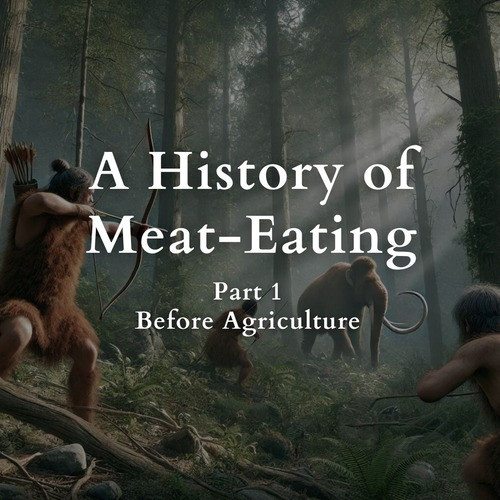How to End Factory Farming
posted on
May 4, 2022

With the re-launch of Hungry Hollow Farm back in 2018, I reached out to Portland-based animal-welfare advocacy group Farm Forward to share my story of returning to my family’s land to begin providing a local, pasture-based alternative to factory farms. This began a fruitful exchange of ideas with Farm Forward’s Executive Director, Andrew deCoriolis, around high-welfare farming practices that has continued over the years.
It has become increasingly clear to me throughout these exchanges that while we desperately need more farmers to adopt better practices with regards to animal welfare and environmental stewardship, there are significant systemic issues that greatly restrict progress on these fronts. To address these systemic issues, much needs to be done in the realms of public awareness and governmental oversight. Farm Forward, as the nation’s first nonprofit devoted exclusively to ending factory farming, is leading the charge on these fronts.
I recently sat down with Andrew to get a better sense for the organization’s vision for a future free of factory farms, and the steps that we need to take to get there.
I hope you enjoy the interview!
This interview has been edited and condensed for clarity.
Grant Jones: The tagline on Farm Forward’s website is “building the will to end factory farming.” What do you mean by that?
Andrew deCoriolis: Part of what we're trying to do with that tagline is signal to people that factory farming is not inevitable, despite its prominence in America today. Even a generation ago the food system for animals looked totally different than it does now. The products that we see in the markets and the farms dotting the landscape are the outcome of a very intentional process, mostly by a small handful of very large meat companies, to produce a system that predominantly benefits them.
What's needed in some ways is not new technocratic solutions, though some of those might help, but a public that is no longer willing to accept factory farming as an acceptable form of food production, not willing to accept the externalities and the risks that come with industrial agriculture, and demand more humane and sustainable alternatives.
What does a future without factory farms look like to you?
In America, our vision would be that by ending factory farming we would transition in two ways. One would be transitioning to diets that are significantly plant-based and rely on plant proteins as the center of meals. To the extent that people continue to eat animal products they will eat them less frequently and in smaller portions. The animal farms that continue would be farms that are giving animals lives worth living: animals raised in extensive operations on pasture and ideally integrated into multi-crop farm systems that are raising both animals and potentially vegetables or other staple crops, and are doing so in ways that improve soil quality and carbon sequestration.
But all those things are not necessary. It could be that we still have some amount of specialization the way we do today. You might still be someone who primarily raises pigs, but instead of having ten barns on your property with a liquid manure system and 3,000 hogs per barn, you might have a few hundred pigs at a time and they might be raised in hoop houses with outdoor ventilation and access to pasture, as is now routinely done by thousands of farms that are part of systems like the Niman Ranch program.
It would probably be more people raising animals ultimately because many of these systems are more labor-intensive and they're usually lower [stocking] densities, but it's not necessary that we need millions of more farmers. I'm not expecting tens of thousands of people to leave cities and go back to farms and start raising animals on pasture. I think it's more likely that in many of the agricultural communities that still exist people would add extensive animal production back into their farming practices the way that they did 50 years ago. Every farm used to have cattle, pigs and chickens mostly for local consumption. It was very common for farmers to have a few hundred chicken layers and sell eggs to a local grocery store. You can still have the same idea even if ultimately those products get aggregated by a co-op or by a marketing company that then takes them to a central processing operation and distributes them nationally. Niman Ranch sells pig products all over the country to some of the largest food service companies and their farms range in size from people who raise ten pigs at a time to people who raise two or three thousand at a time.
So you still may have economies of scale in certain ways but it's not going to be animals raised entirely in confinement, and it won’t be dominated by five companies like it is now. It would be much more likely to be an ecosystem of businesses that raise animals regionally, or maybe nationally, but are going to be using husbandry practices that will be familiar to anyone's parents or grandparents who farmed.
What needs to happen for this future to become a reality?
It's everything from individual diet choices to changes to institutional food policy, and what kinds of foods our schools, hospitals, jails and workplaces serve. It needs to be regulatory and I think that's a piece that we really haven’t successfully tackled yet as a movement. Our first steps would be just making factory farm companies pay for their externalities. So instead of relying on what they see as disposable labor and being able to pollute at will with very low-cost or no penalty, and being able to export their increased pandemic risk onto the public, those things would be things that those companies need to pay for. My guess is that just the act of having to pay the full cost of production will probably change many of their practices, or just make those businesses less profitable.
Huge changes in regulation are needed, both state and federal. Ultimately the kind of broad sweeping legislation that's necessary is something like the Farm System Reform Act which was introduced in the senate by Cory Booker and Elizabeth Warren and in the house by many different representatives. The legislation puts a moratorium on new CAFOs (Concentrated Animal Feeding Operations) and requires that existing CAFOs phase-out of operation by 2050. So it sunsets those operations, lets companies depreciate the assets they’ve put into barns and gives us a long window to transition to different forms of agriculture.
Importantly, the proposal includes billions of dollars of funding to do two things. The first is to help support the debt that farmers currently hold which is in the billions of dollars. All of these small farms have taken out, in many cases, millions of dollars of debt to build expensive barns so they can get a contract with one of the chicken companies, only to find that those contracts are extremely unprofitable and they have nowhere else to go and they're locked into that sort of debt servitude relationships with these big integrators.
The second is funding to build the infrastructure and develop the knowledge to support different forms of agriculture. So instead of putting all of our money into land grant universities that are promoting how to raise cattle in confinement on feedlots, we need extension services and land grant universities who are helping support businesses who are figuring out the most efficient and productive ways to raise animals on pasture or in different kinds of production systems.
So there is a ton of work to do. Public attitudes also need to change. The public right now broadly still thinks of the big meat and poultry companies as if not benign then they think of them generally positively. My sense is we need to think of Tyson the way we think of Chevron. These are companies who are acting against the public interest for their profit and are endangering all of us in a variety of ways: climate, local pollution, pandemic risk etc. It’s not going to be until the public thinks of these companies in those kinds of terms that we’re going to get serious about regulating them differently.
Can you talk a bit about how animal welfare certifications are currently functioning versus how they might function in an ideal system?
Certifications today primarily serve as a marketing vehicle for large meat and poultry companies that are raising animals primarily in confinement, but in slightly less bad ways than are commonly done in the industry. So instead of a chicken farm that raises 40,000 birds in confinement with no natural light and no enrichment, you've got a barn that raises 29,000 birds and they put some straw bales in the house. It gets them a little more space and a few more things in the barn to interact with. Those are small, meaningful maybe, but small improvements and certifications are primarily being used by those companies to market their products.
Unfortunately I don't think that's what most consumers expect when they see a label on a package that says ‘Humanely Raised,’ ‘Animal Welfare Certified,’ or ‘Certified Humane,’ or any of the other certifications that are currently being used. What we know from survey work is that when consumers see those labels they expect that animals are being raised on pasture.That's the threshold for what consumers want in terms of good animal welfare. They want animals to have access to the outside, which is totally natural. These animals should have access to the outside! Historically these animals were raised entirely outside and that's not being met by the current certifications.
Certifications could be used to really foster and motivate continuous improvement among companies. Our involvement, especially with Global Animal Partnership, really started because we were optimistic at the time — this is more than 10 years ago — that a tiered system could be used to both reward companies for making small improvements but also create a market for truly higher-welfare products from animals raised on pasture. I think that's still possible, it would just require the right market and organizational conditions to exist to build a system that does that.
The challenge of certifications in general is that they are voluntary, and so producers are only going to put them on their packaging when it benefits them, and most producers don't want to change very much. They want to change as little as possible to get the maximum marketing and price premium they can get for the smallest changes that they can make. Because these certifications are voluntary and you can't make a producer put them on there, you're having to use a lot of carrots and you don't have a lot of sticks. And so you're putting the meat companies in the driver's seat a little bit, and they have in my opinion too much control over the standards of the certifications and how they're used.
Do you find that certifications are a stand-in for what would simply be transparency in an ideal food system?
One-hundred percent. Certifications only exist because of what I would describe as a regulatory and market failure. Because we have a USDA that doesn't meaningfully regulate, it creates an extremely murky situation where third party organizations pop up in an attempt to fill that role.
We have an extremely opaque food system. Certifications are a stopgap, and an imperfect one in lots of ways. Usually what I hear from farmers and ranchers is that they know what better welfare looks like and they know what consumers want, but they’re at the business end of a system structured with bad incentives. They’re pressured by the retailers who are saying they’ll only pay a certain price per pound, and producers know they can’t raise animals truly on pasture at that price and so they end up stuck with a confinement model in order to meet the price point the retailers are demanding. The retailers then turn around and sell the products for several times the cost and market it in any way they really want because there's very little regulation and very little transparency.
So as a consumer it's a tough market out there. There are a lot of consumers who want to do better and want to buy products that align with their values, but the tools they have to find those products are bad at best.
How can folks support the important work being done at Farm Forward?
Well I love that question! Folks can obviously visit our website, FarmForward.com. We have a quiz consumers can take to test their knowledge of labels and claims they see on products. So if you're someone who cares about the kind of products you're buying and are trying to buy higher-welfare products and you think you know what labels mean and what certifications mean, take a look at that quiz and see if your knowledge is as good as you think it is.
And then if it's not and you want to take action, we have opportunities to sign up and get engaged on these issues. Oftentimes what helps us push retailers and food companies to do better is public pressure. When they know that their customers and potential customers are unhappy with the humane-washing they are doing or the fact that they don't meet certain standards, that gives us leverage to push these companies to do more.
Then of course if folks want to donate, we can use as much support as we can get!
###
If you enjoyed this article, please consider sharing!
About Hungry Hollow
Hungry Hollow is a diversified farm in Shelton, WA producing pasture-raised meat, eggs, and vegetables. With a focus on animal welfare and ecological stewardship, our work models an alternative to industrial agriculture that is rooted in joy, transparency, and reverence for life.



